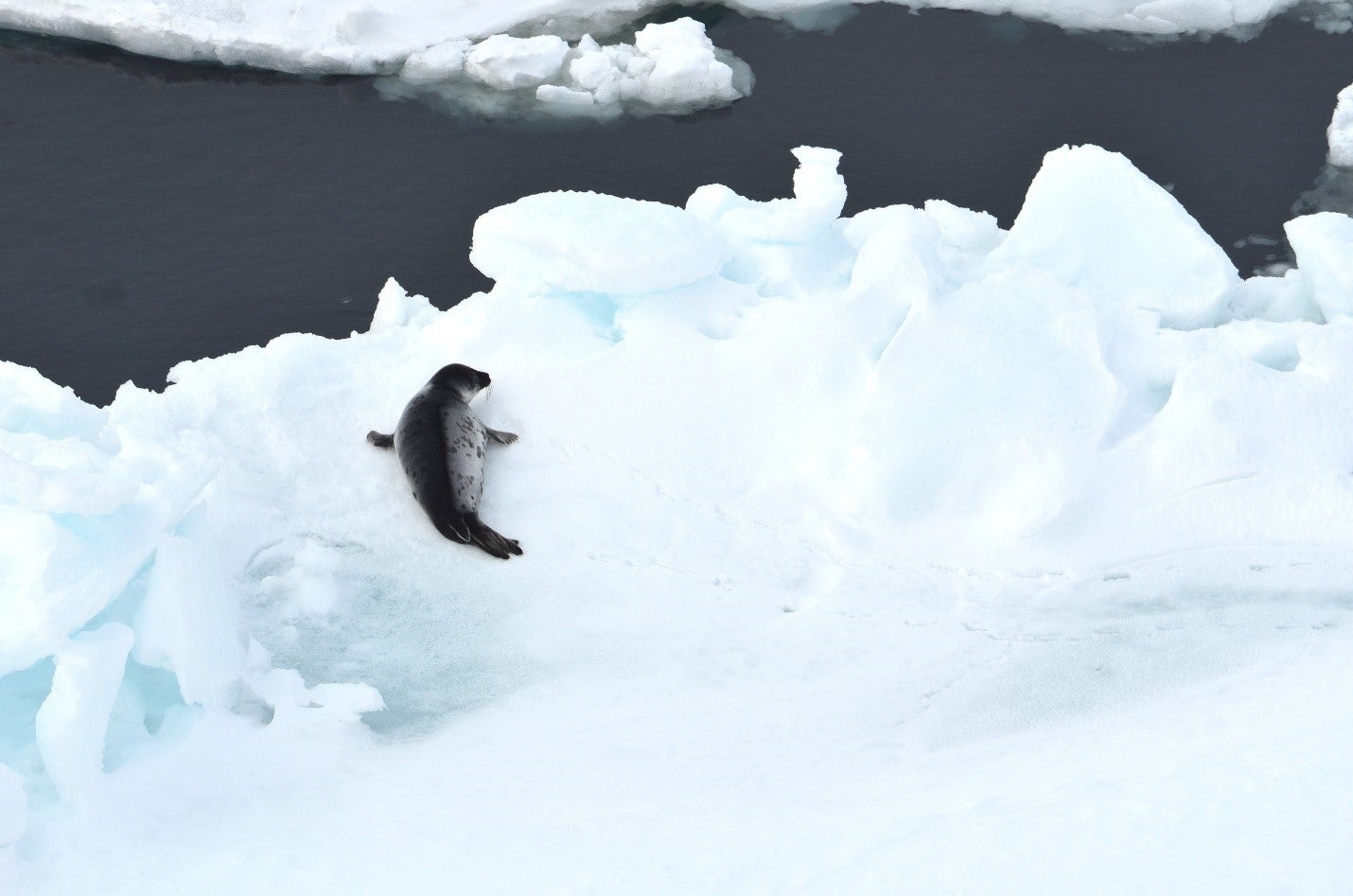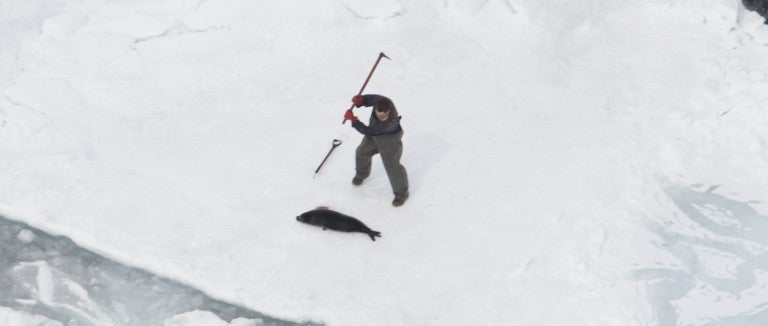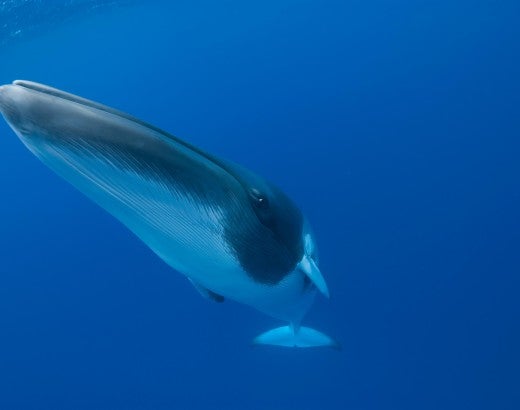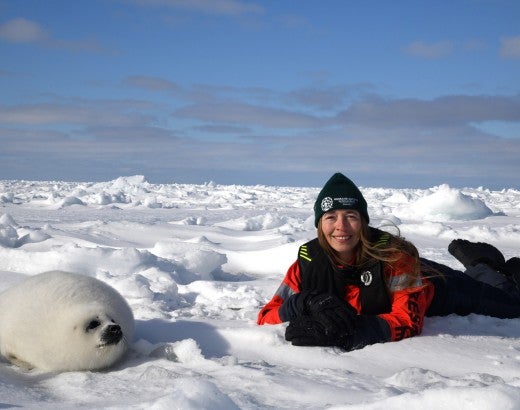Some threats facing animals can seem too gargantuan to fight. Those are precisely the issues we choose to pursue, and I am immensely proud of our commitment to exposing some of the cruelest practices facing animals all over the world. Canada’s commercial seal slaughter is one of these immense and unfathomable issues, and we’ve fought it for decades. In this guest blog, Rebecca Aldworth, executive director of Humane Society International/Canada, remembers the first time she witnessed this hunt and recounts how we’ve made progress for seals since.
I will never forget my first trip to bear witness to Canada’s commercial seal slaughter 25 years ago. I remember the feeling of intense shock that defined that day: the bloody footprints I left behind as I inadvertently walked through a kill site covered in fresh snow and the cries of baby seals across the ice. I remember wanting to apologize for not being able to stop the carnage that was unfolding in every direction. I remember a sealer from the same province I called home running at me with a club held over his head, yelling at me to run for my life.
I didn’t run. I stood my ground, pointed my camera and filmed. And in that moment, I swore I would never stop exposing the cruelty of this hunt until it was relegated to the history books forever.
Most Canadians oppose the commercial seal hunt, and the industry relies almost exclusively on international markets. So, each year, we showed the horrific images we filmed in the countries that imported Canadian seal fur. As the world community demanded an end to the cruelty, 35 nations banned their trade in products of commercial seal hunts and effectively removed the financial incentive for sealers to kill seals. Seal kill levels in Atlantic Canada plummeted from 365,000 in 2004, when we began our work to close markets, to less than a tenth of that in 2022. Over the years, our efforts have saved more than 4 million baby seals from a horrific fate and changed the context in which we work to protect marine mammals forever.

But even as we celebrate the incredible progress we have made, the harp seals who are still the targets of the commercial sealing industry are contending with another human-made threat. Climate change is fast destroying the sea ice habitat these ice-breeding marine mammals rely on to give birth to and nurse their pups. As the ice diminishes each year, seal pups are increasingly forced into the water before they are old enough to swim and survive there. In some years, entire cohorts of seal pups have perished in key birthing areas because of this unfolding climate disaster—and Canadian government scientists confirm the situation will continue to worsen in the coming decades. Notably, 2023 saw some of the worst sea ice cover we have witnessed in the past few decades.
A responsible nation should end commercial slaughter of animals who survive such environmental devastation. We and more than 130,000 of our amazing supporters delivered that message to the Canadian government this year, demanding the 2023 commercial seal slaughter be shut down to protect the harp seal population.

Instead, the government has chosen to pander to commercial sealing advocates. The head of the official opposition party in Canada suggested last month that commercial sealing should be expanded, and seal meat used to produce pet food. During a recent government hearing on commercial sealing, industry spokespeople repeatedly called for a resumption of large-scale commercial sealing—the kind of slaughter that kills hundreds of thousands of baby seals in just a few days—and insisted the government should invest in developing new markets. Members of Parliament concurred, with one suggesting annual kill levels should be in the 600,000 range.
However, those testifying also identified the U.S. Marine Mammal Protection Act as an important barrier to their goals. The U.S. has a long and proud history of protecting marine mammals, one that may play an important role in blocking the proposed expansion of commercial sealing. This is because the Marine Mammal Protection Act now prevents seafood from being imported into the U.S. from international commercial fishing operations that result in marine mammal mortality in excess of U.S. standards. The U.S. is a $5 billion export market for the Canadian fishing industry, one that the Canadian fishing industry and government will work hard to protect. The Canadian fishing industry has repeatedly publicly admitted that there are few markets for seal products; the industry’s motivation in killing seals is to benefit itself. That makes the Marine Mammal Protection Act, and the views of Americans on this issue, highly relevant to the future of these seals.
As I write this, the 2023 seal slaughter is winding down. Soon, the surviving pups will migrate out of range of Canadian sealers, so we must think forward to the fight for next year’s seals. As we do, the Canadian government and sealing industry should be very certain of this: My promise 25 years ago remains as strong today as it was back then. Make no mistake, we will stand guard for the baby seals until the Canadian government does the same.
You can take a stand for seals by telling the Canadian government to end this hunt for good.



